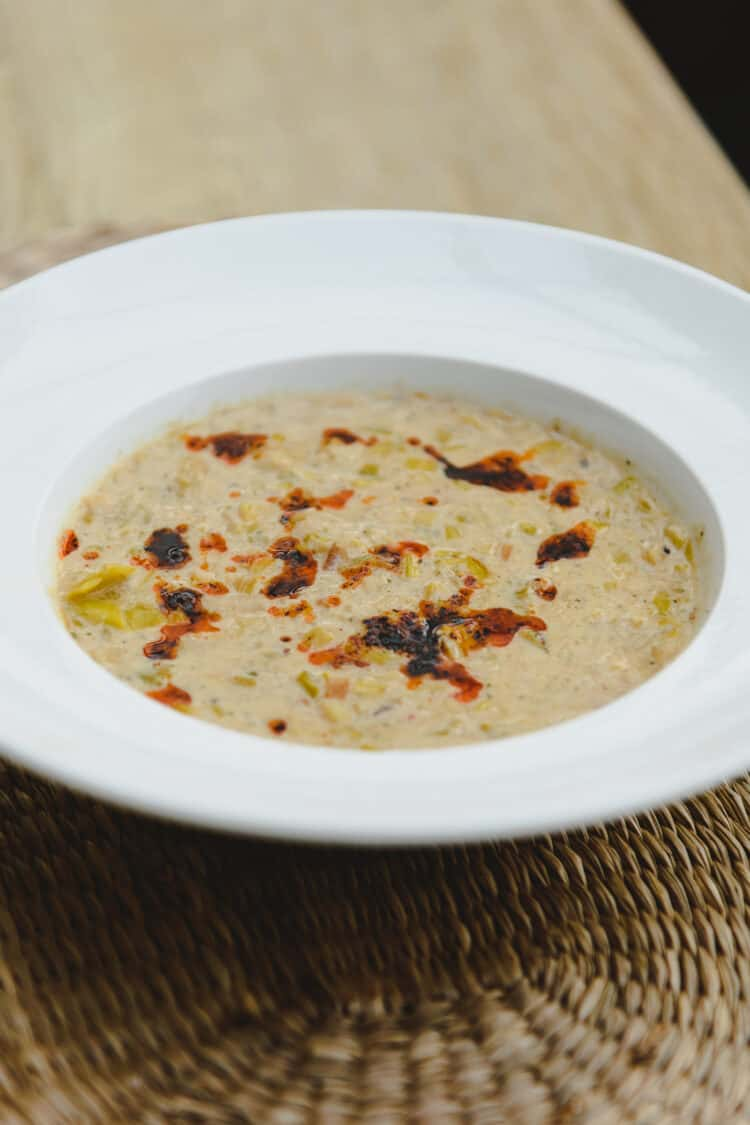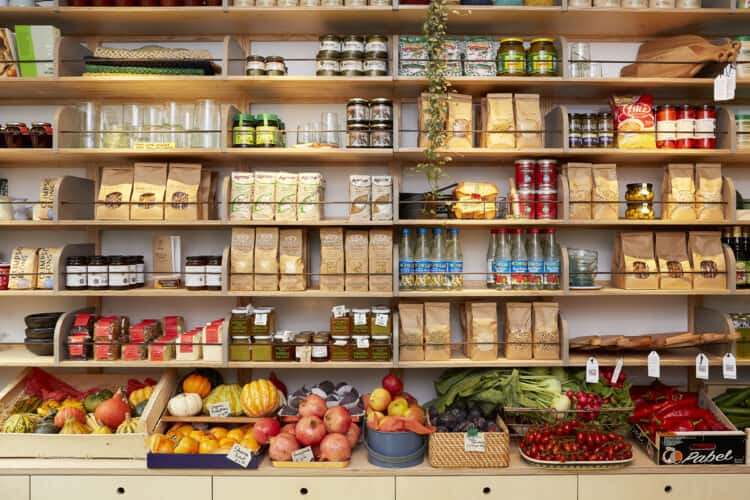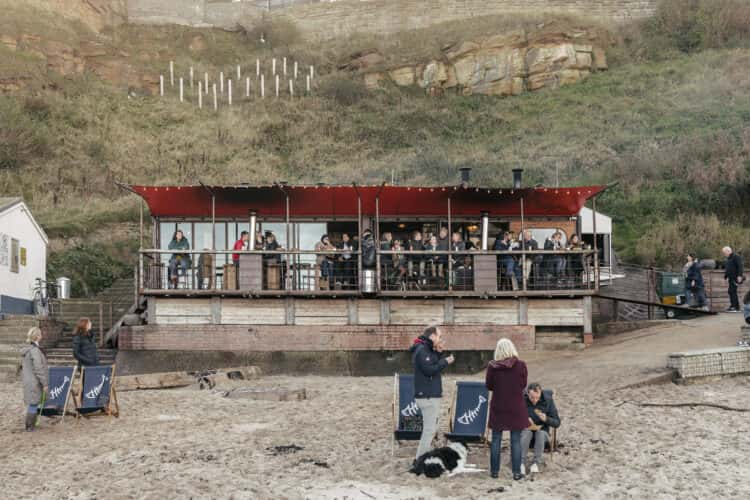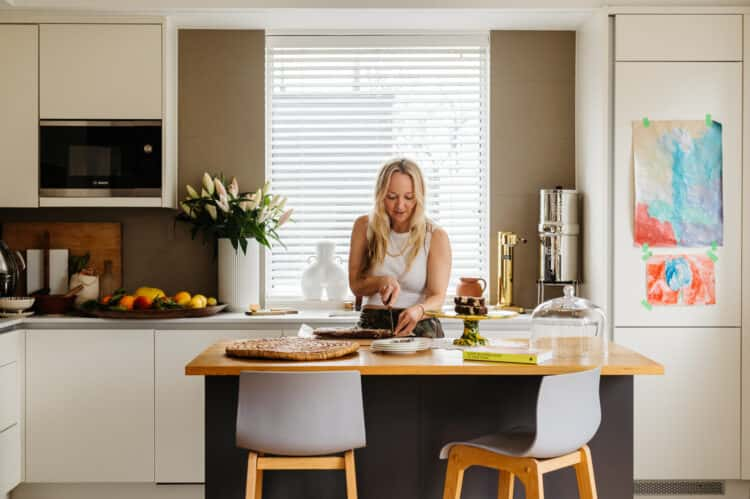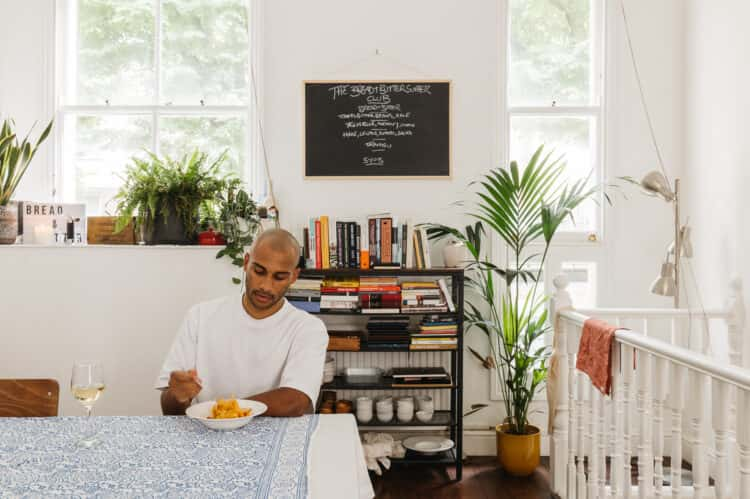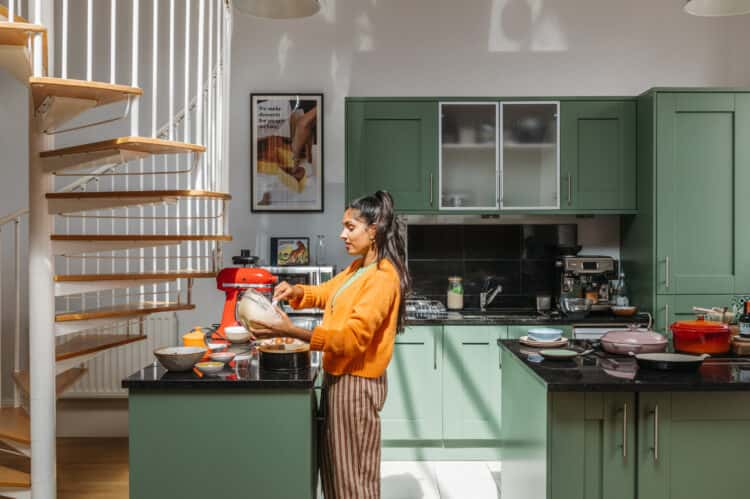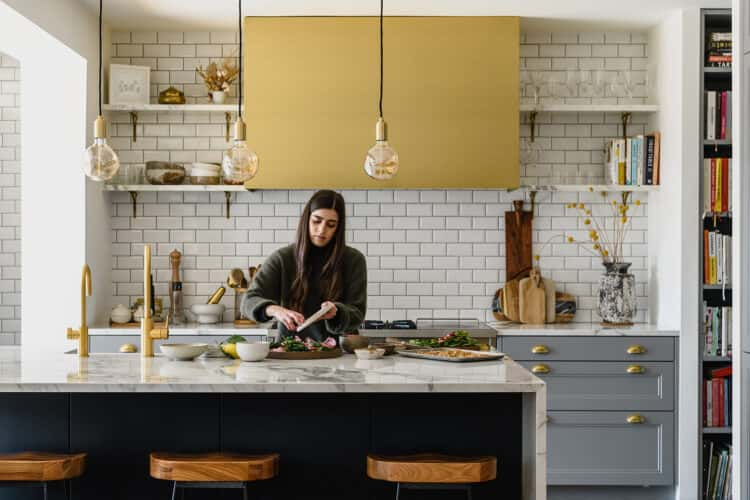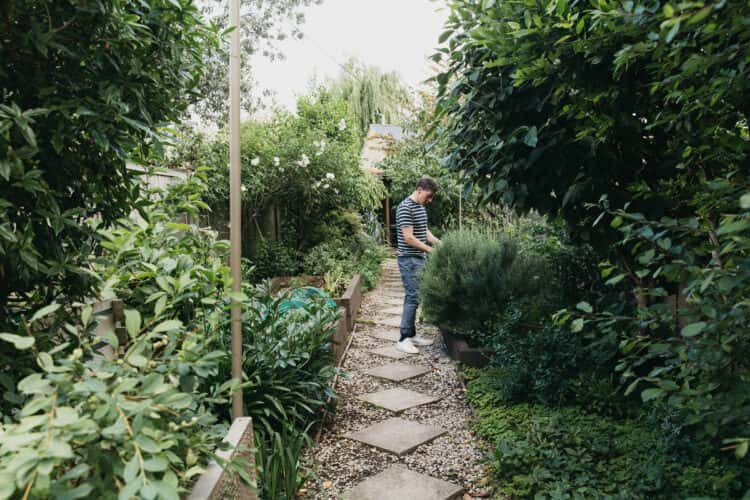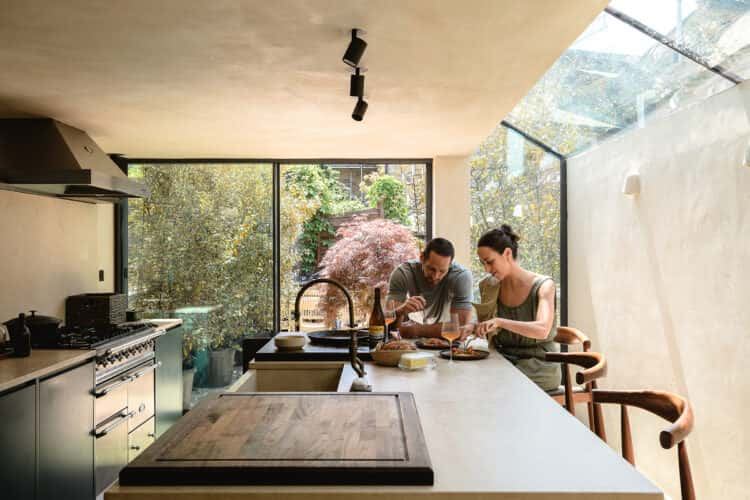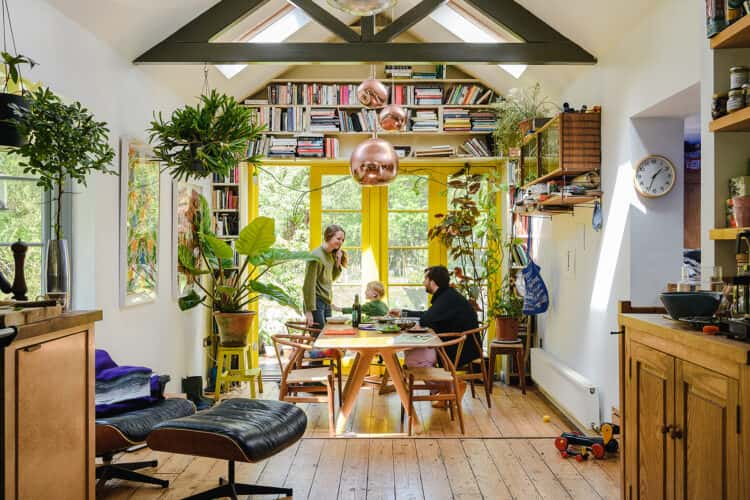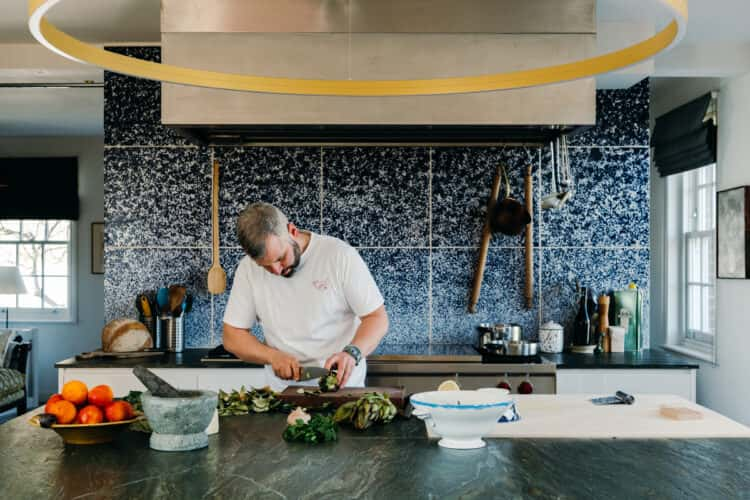Chefs at Home: Moro restaurant founders Sam and Sam Clark on the pleasures of home cooking, plus a recipe for leek and yoghurt soup
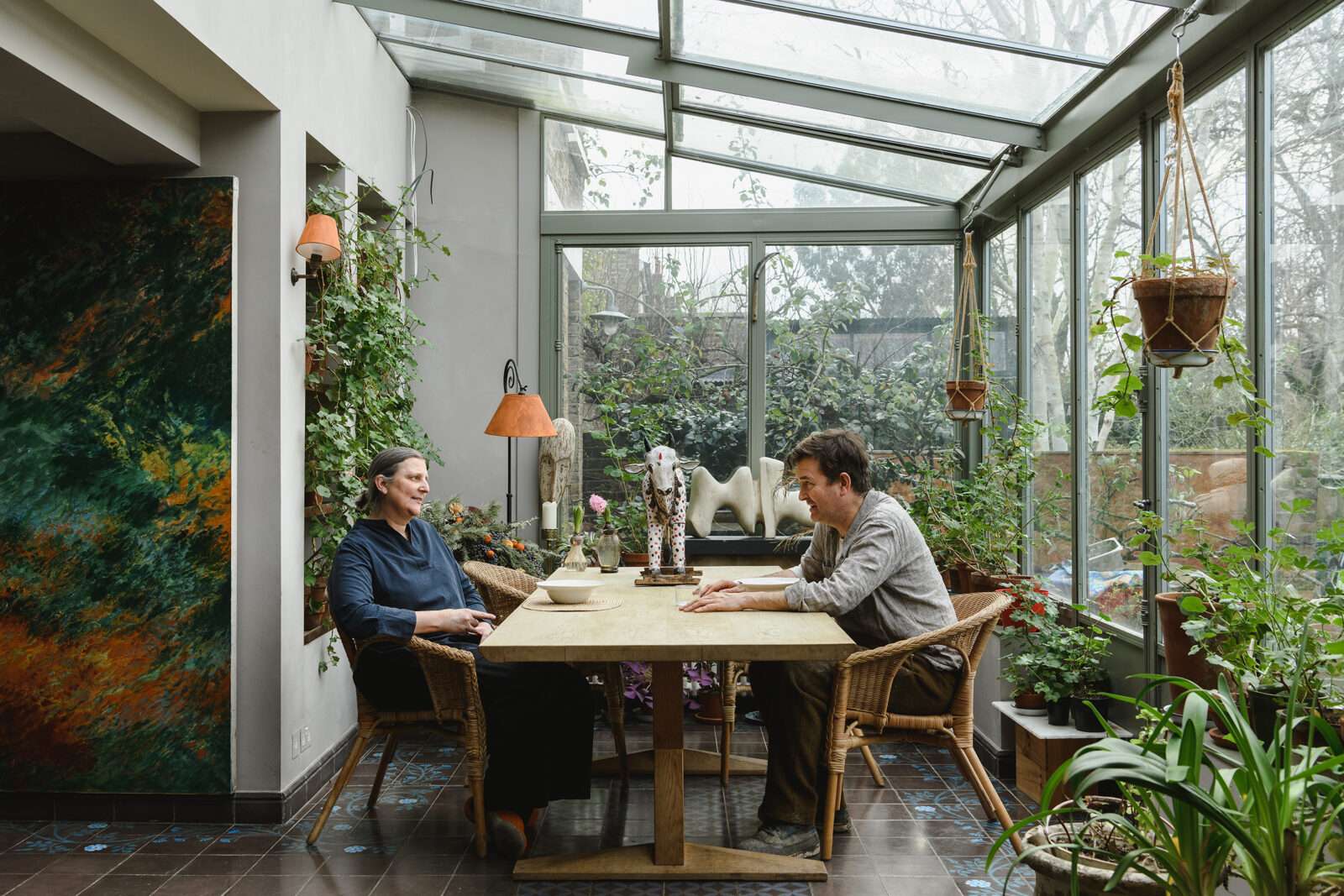
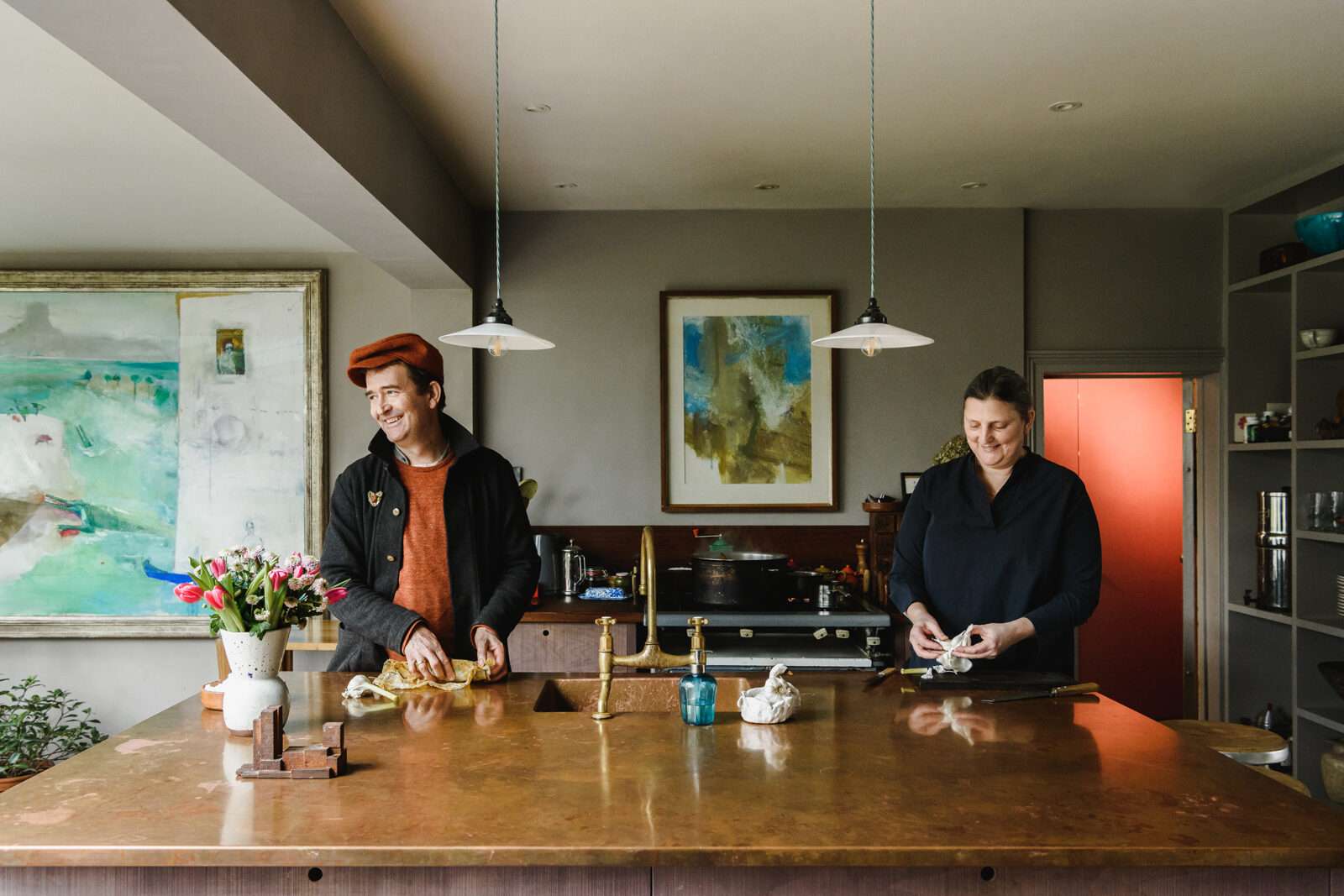
“This kitchen is designed to be the heart of the home. We made the conservatory bigger when we got here, and then put plants coming off the wall, so that the garden sort of comes inside. And it was important to have the dining table in here as, like most people now, the kitchen is where we spend most of our time.
“We get good daylight in this part of the house, even on a grey winter’s day. So that was key, this feeling of light and life in the kitchen, that it’s not tucked away in some dark corner but really the centre of the house.
“As with our food, we like the old ways of doing things. So, rather than a modern kitchen with overhead cupboards, we’re very lucky to have a side passage where all our clutter, gadgets, washing machine and cupboards and shelves are, out of sight. The actual kitchen is just countertops with drawers underneath, and that immediately makes it feel more homely, we find.
“The extra wall space allows us to hang lots of artworks by family and friends. We wanted it to be an interesting space, somewhere friends could sit and talk to us while we cook, but also somewhere their eyes could wander around to look at art, plants or the garden, so that it’s a stimulating room to be in – and that’s just without the food!
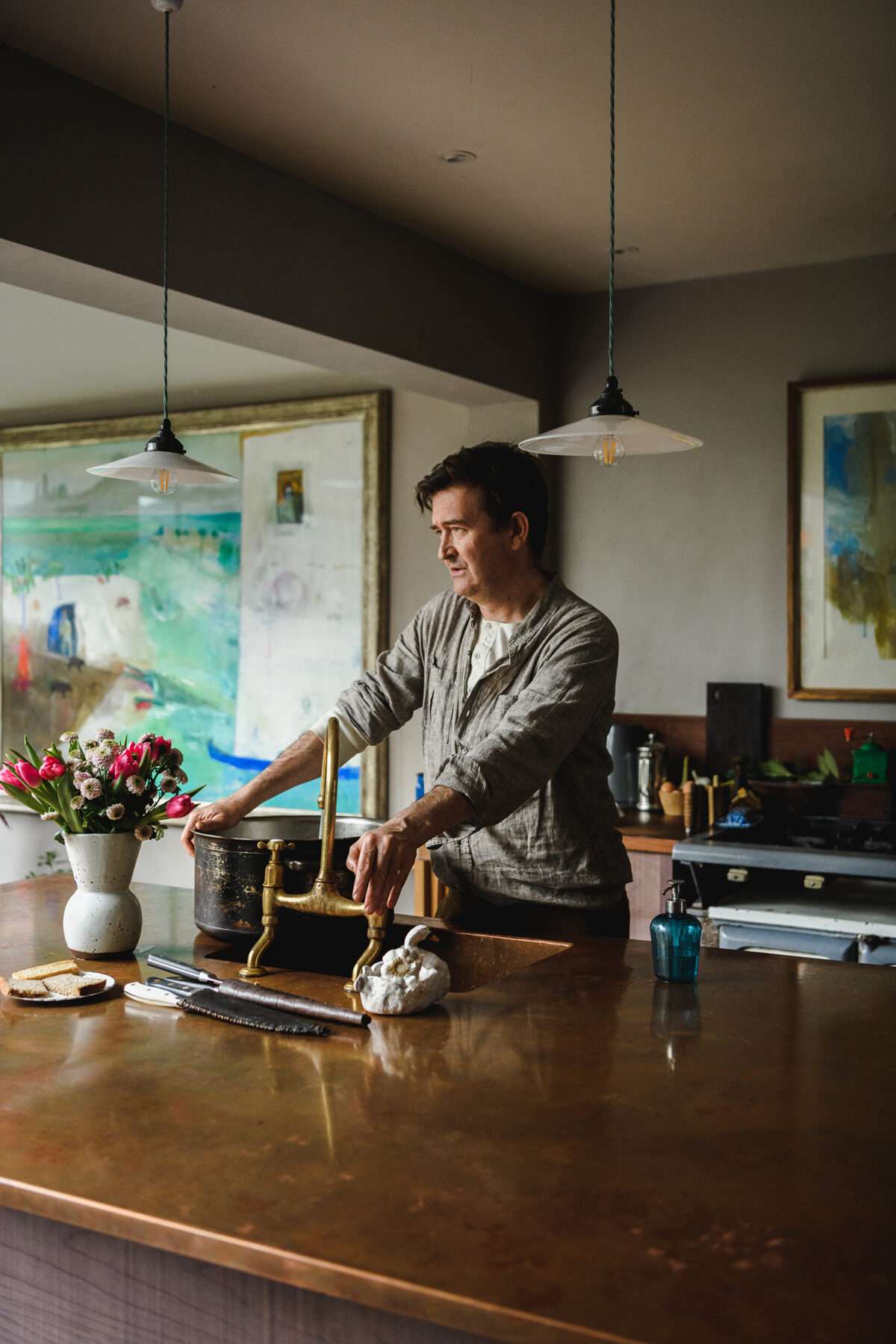
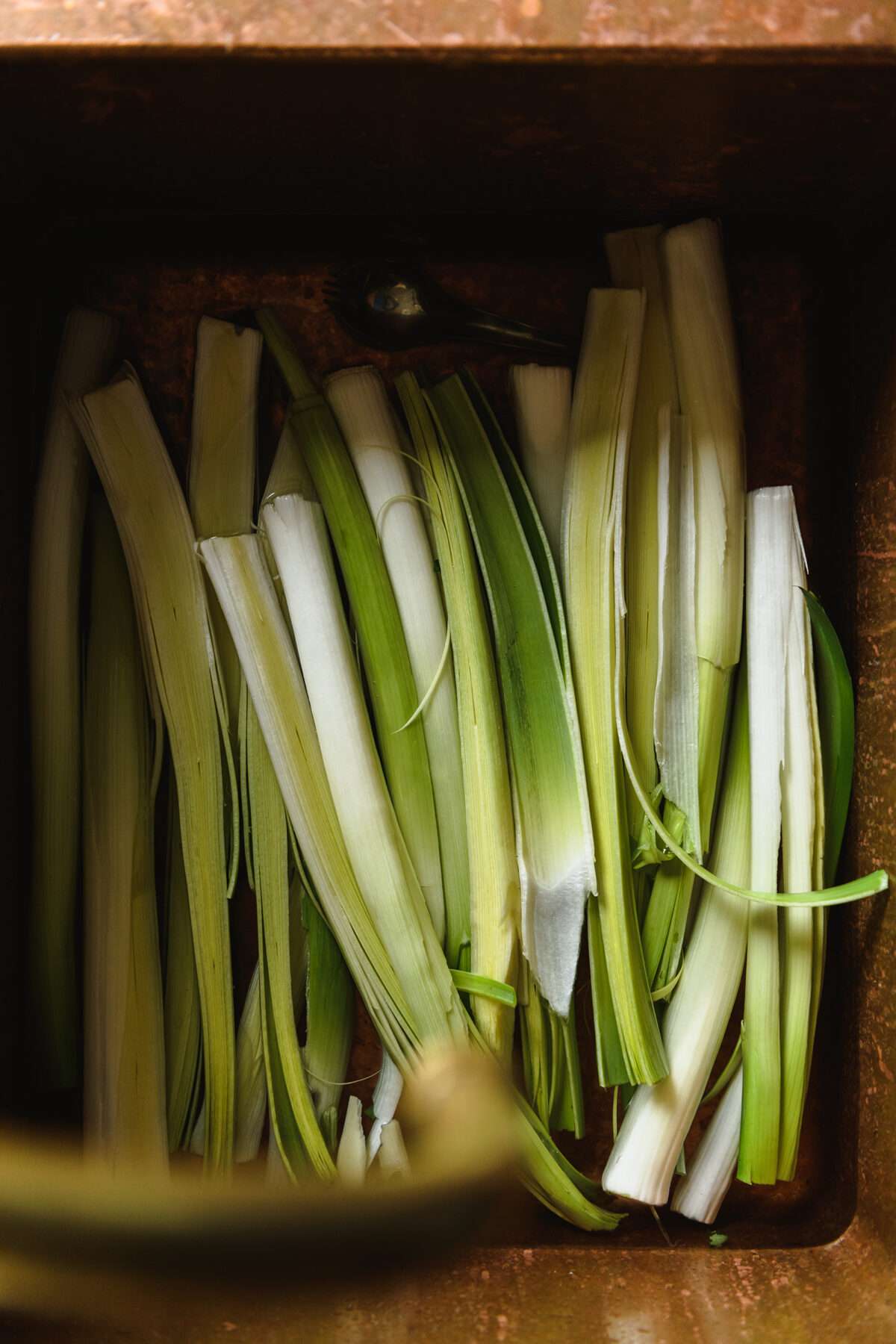
“Our most cherished kitchen tools are our Mexican pestle and mortar (molcajete), our oven and the countertops.
“The pestle and mortar is made out of lava rock, and really wonderful. They have this fantastic grinding motion, so really break down fibrous spices and chilli skins, for example. You don’t use soap on it, so it gets this patina that builds up, as well as the slight taste of whatever you’ve made before. And it’s so satisfying to use, and so tactile.
“Wherever we’ve been, we’ve always liked chopping directly onto the worktop, and we try not to use chopping boards. Here, we have a reclaimed teak worktop and again it’s about the patina that builds up, and the softness that develops in the wood.
“And then our cooker, which was made in the 1950s but probably designed in the 1930s. It’s so wonderful to use and really big; we find contemporary domestic ovens too small. It’s versatile, strong, beautiful and tactile, all things that are important if you cook a lot, especially having pleasing things to touch and work with.
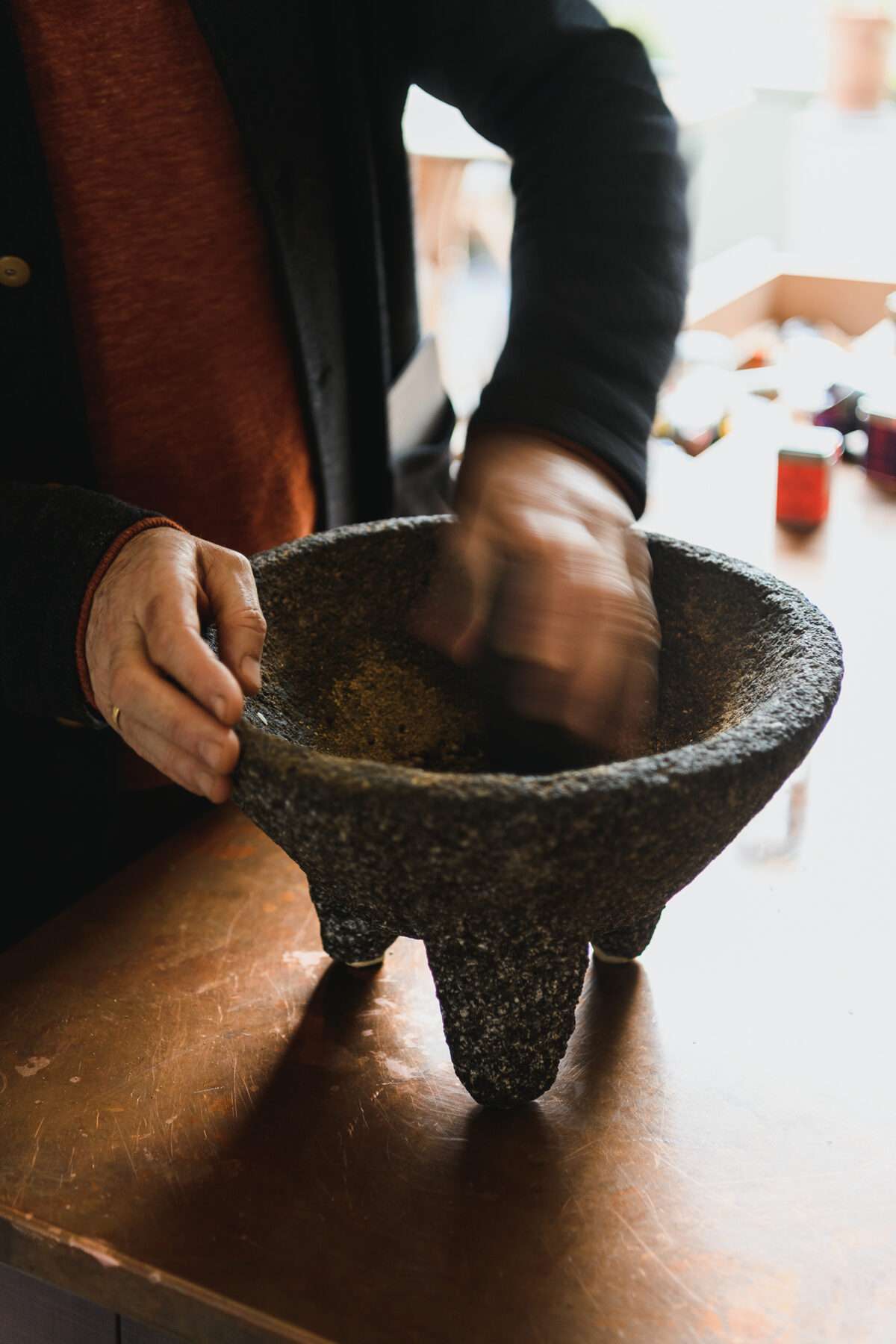
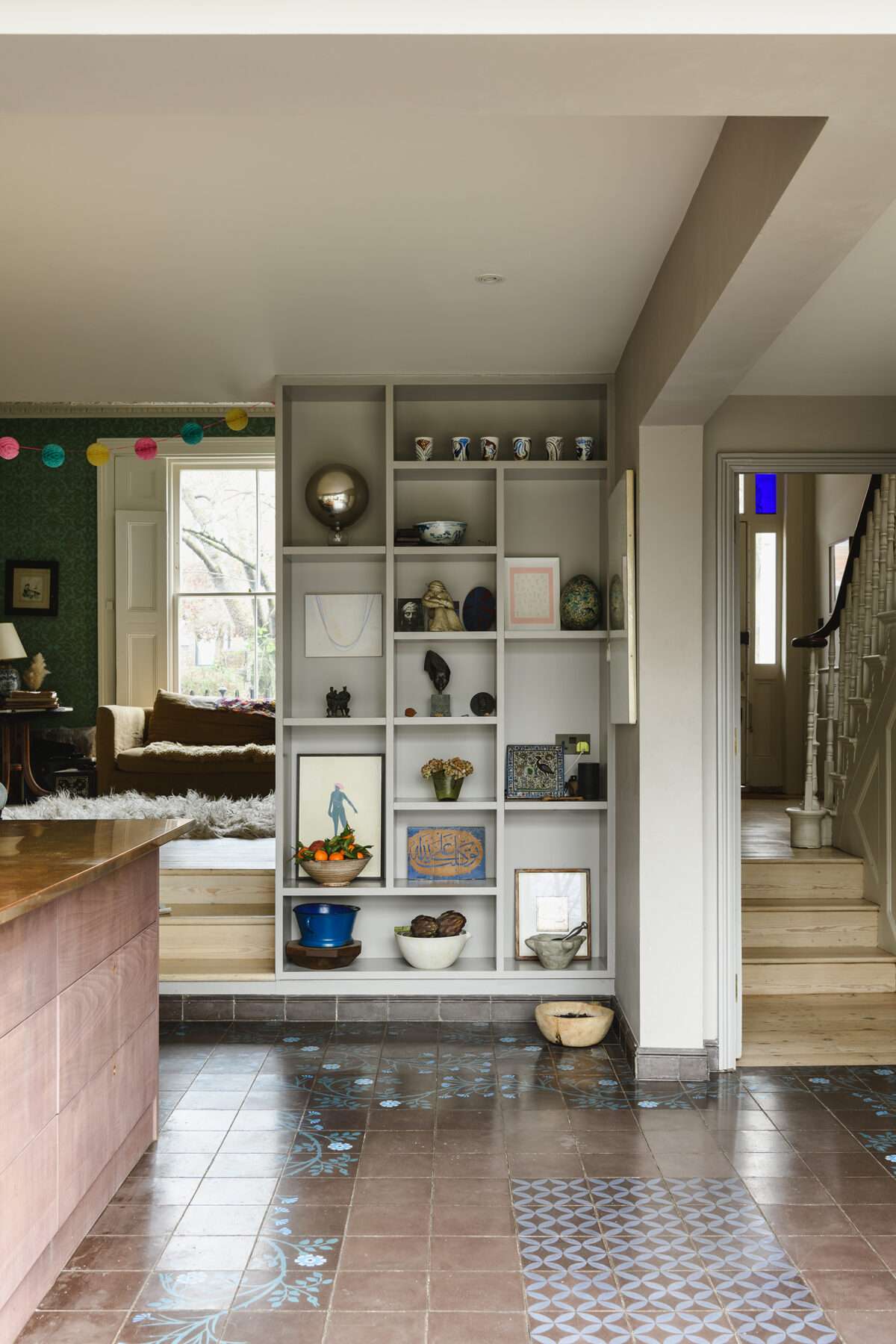
“The cookbooks we refer to most are the ones we look at to get inspiration for Moro. And that’s people like Claudia Roden, Paula Wolfert, and lots of wonderful Turkish cookery writers. We love cookbooks, and always have a stack by our bedside.
“As we’re in lockdown at the moment, we’re all about Indian cookery, so are looking at the Dishoom book a lot, and Chinese too, so the Sichuan book by Fuchsia Dunlop gets a lot of attention. And then there are a few go-tos like the River Cafe books for a really good risotto or something.
“As you can probably tell, we have a bit of a split personality when it comes to food at home, but it’s just been wonderful in lockdown to explore more exotic ingredients like Sichuan peppers or Mexican chillies, because hopefully we’ve got plenty of time to get back to the eastern Mediterranean flavours when we’re at Moro.
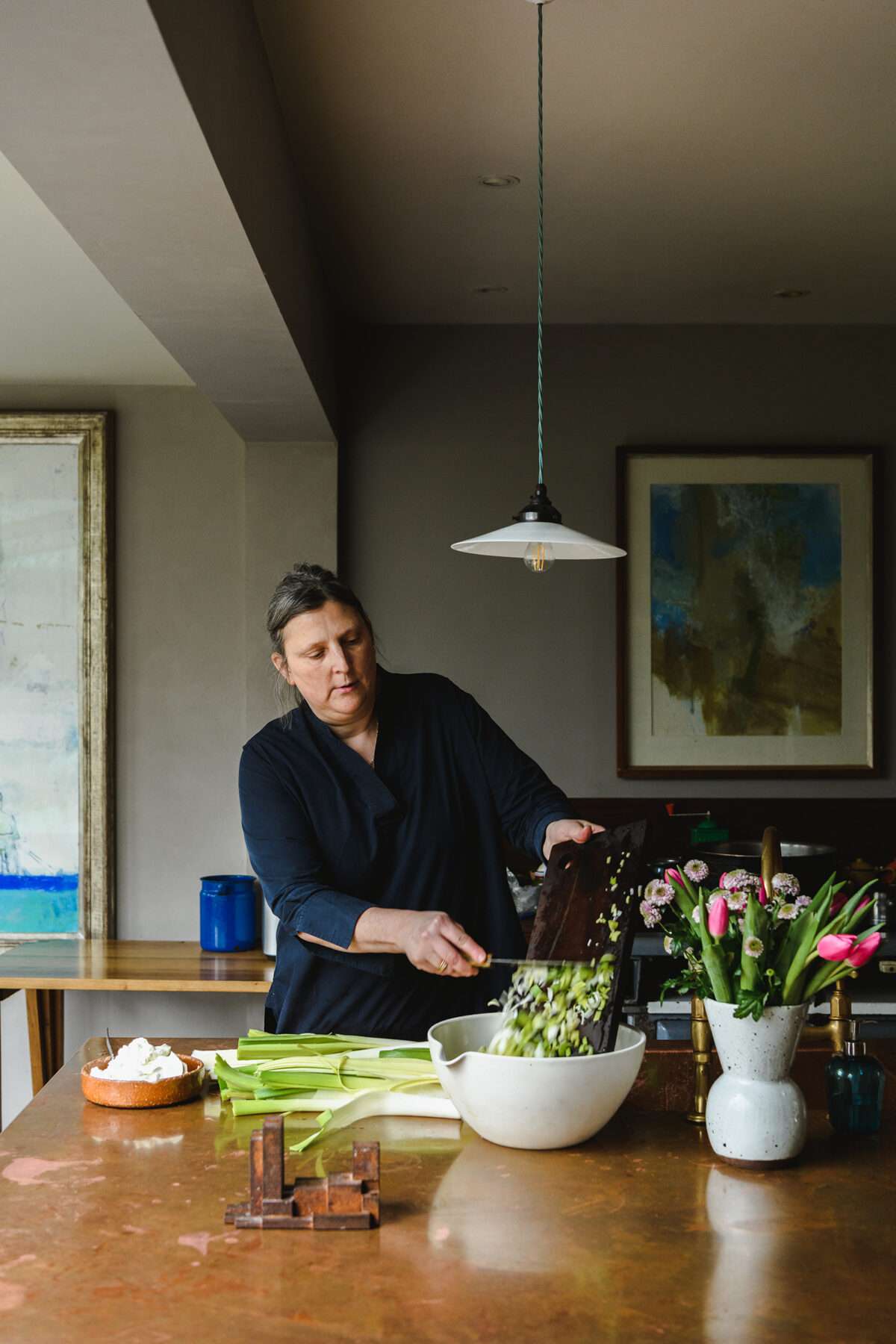
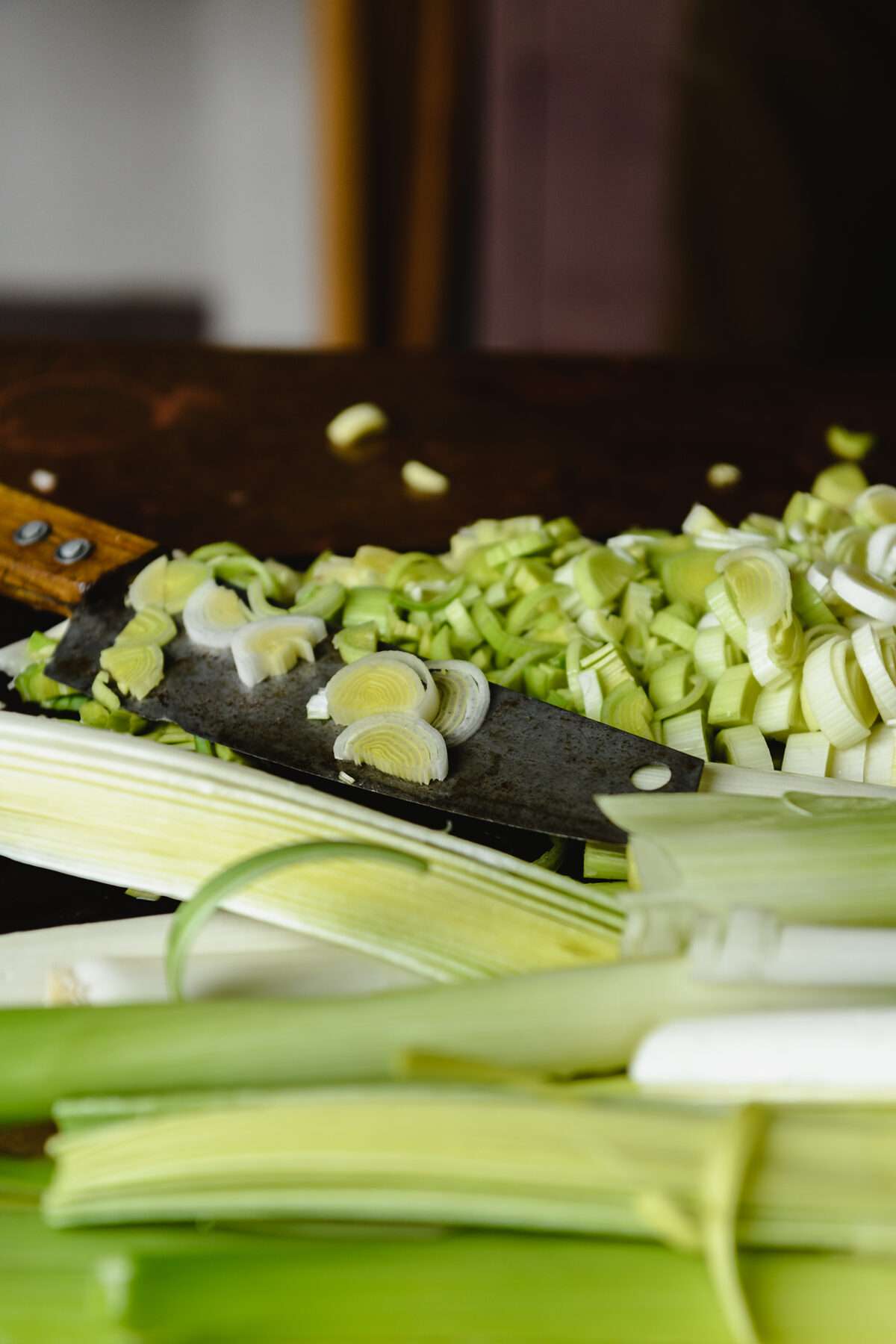
“Our approach to home cooking starts with shopping. It’s great to get out there and use your eyes to see what looks good and then come home and make something. We head to Blackstock Road at the moment for this great Algerian shop where the other day they had delicious merguez sausages, some really fresh-looking chicken livers and then some freekeh, that’s roasted green wheat, on the countertop. It was so inspiring.
“We find that we want to respond to all these great ingredients on our doorstep. The secret to being a chef is really to be distinctly and relentlessly greedy. This lockdown has allowed us to do that, whereas the restaurant is just very time consuming when it’s up and running. Having this time to reengage with food and cook from the stomach and from the heart again is one positive aspect of where we are.
“A weekday meal here looks like radicchio risotto, which we had last night. We had chicken stock, bacon, a little bit of jamón and smoked sausage in it, and used organic arborio rice. We ate it with cold spinach dressed with olive oil, lemon, sea salt and black pepper.
“We try to do big batches of soups and dahls for lockdown – there’s no point cooking four portions of soup! Generally, we have something like that for lunch and then a bigger, more substantial dinner.
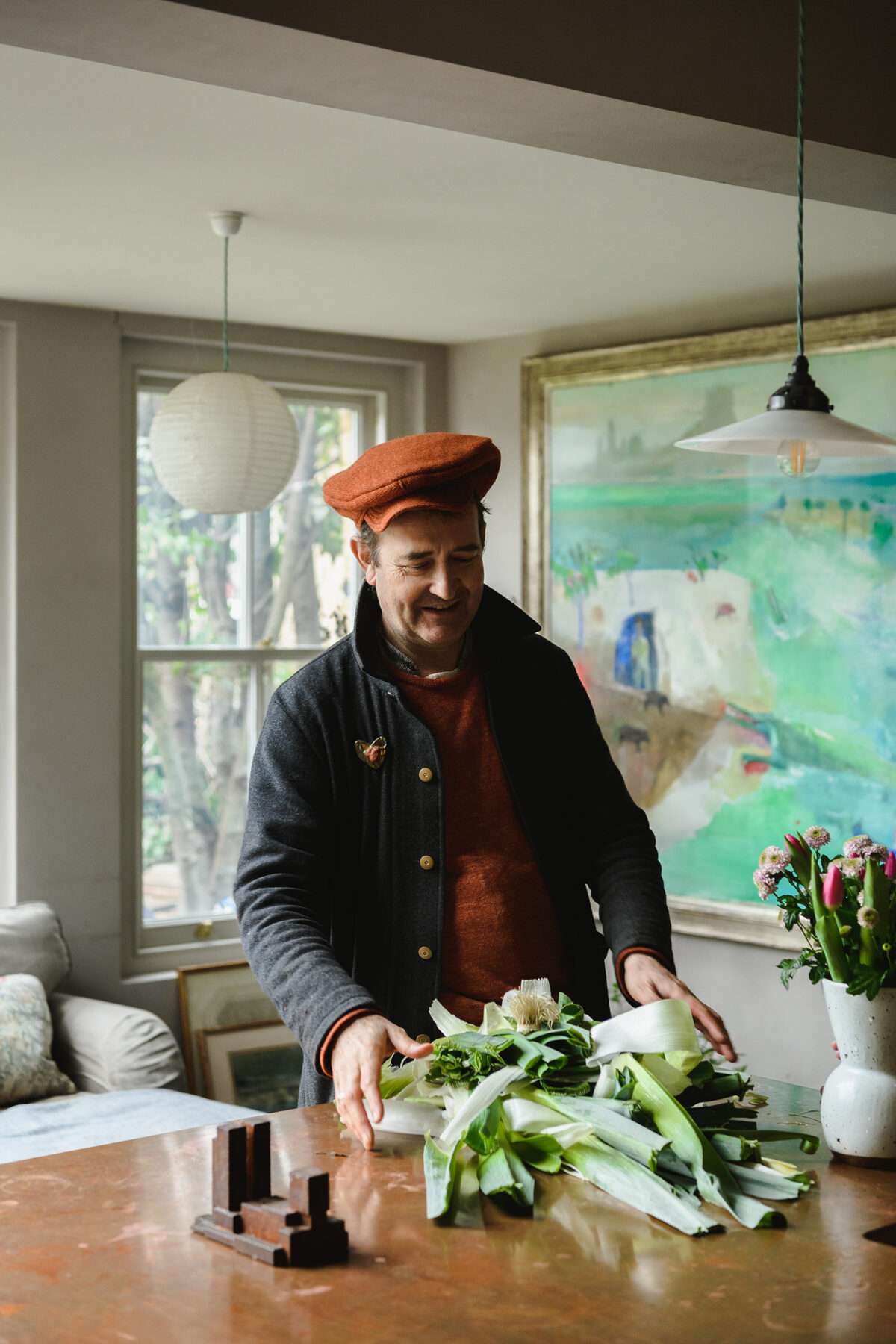
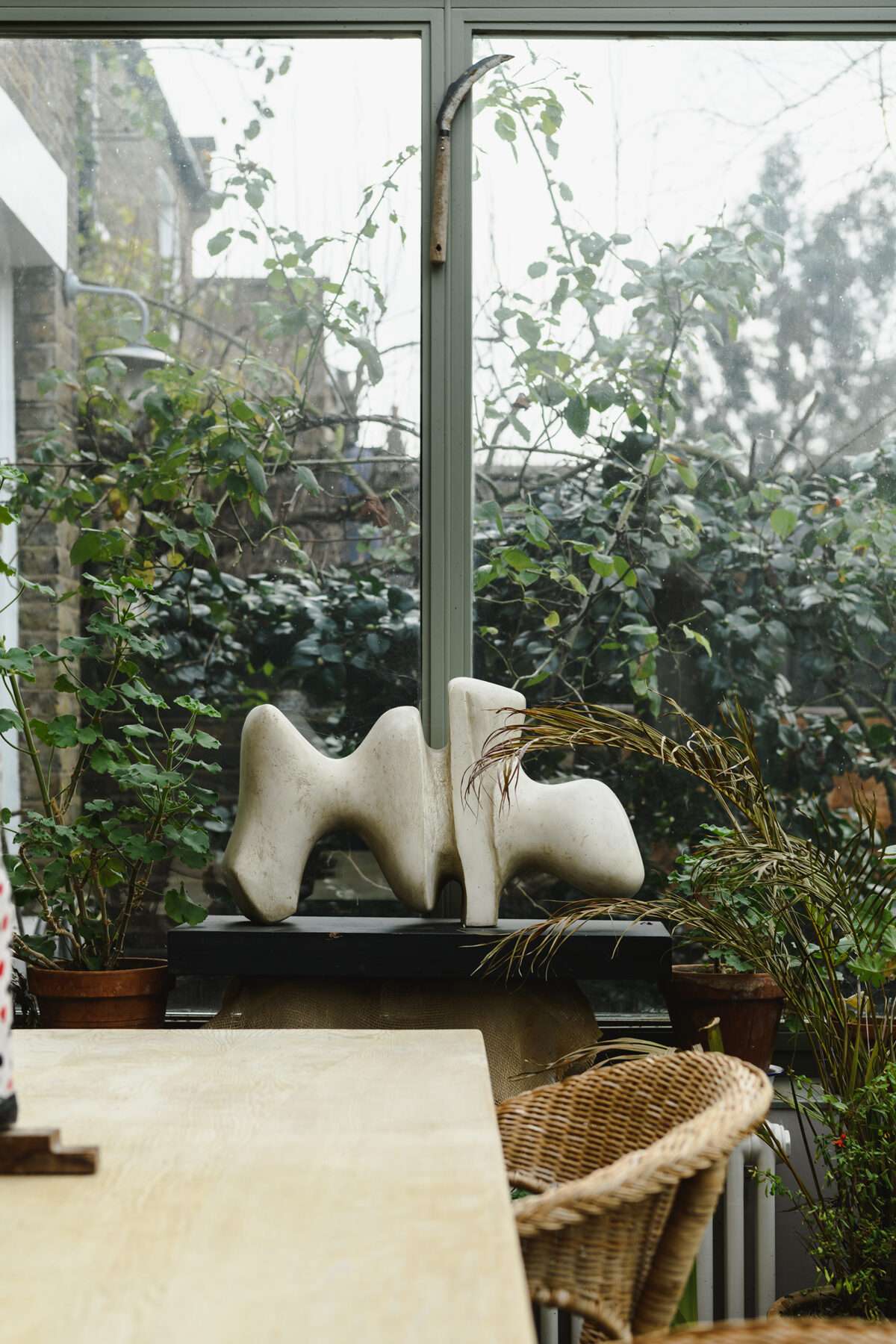
“At the weekend we like to get a big fire going outside and sit in the garden. But it depends on the season and time of day. In the autumn and summer we might do lunches in the conservatory with the doors open, then light a fire and head outside for a barbecue dinner of marinated chicken and loads of vegetables. In the winter we like long cosy dinners with flowers and candles… proper evening table glam.
“Our fondest memories in this kitchen are when we’ve been able to show people what you can cook with a garden and allotment. We’ve got an almond tree that we planted in the garden, and a fig tree. We love to make a salsa with the early summer green almonds, and a salad with the figs, or, if you picked when they’re green, we cook them like courgettes.
“We love wrapping fig or vine leaves around sardines and barbecuing them; using vine shoots in salads; making a dressing from green grape juice, or putting artichoke leaves into risottos and rice dishes. It’s the greatest luxury to be able to pick and cook something unique, to give people taste experiences they’ve never had before.”
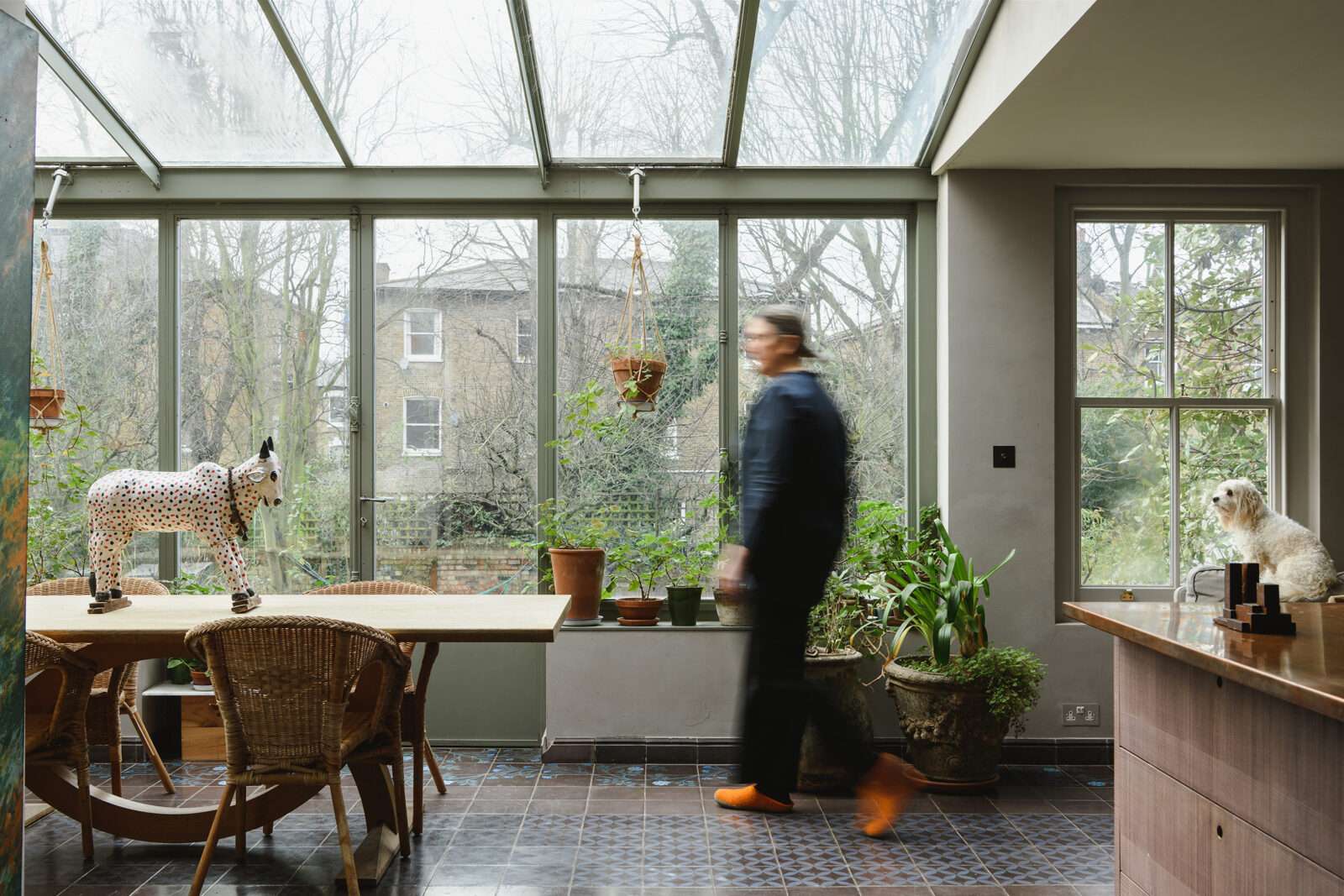
Serves 4
50g butter
3 tbs olive oil
4 medium leeks, trimmed, cut in half lengthways, washed drained and thinly sliced
½ tsp Turkish (Aleppo) chilli flakes (or hot paprika)
½ rounded tsp dried mint or 1 tsp chopped fresh mint
½ level tsp ground cumin
1 egg
½ tbs plain flour
350g homemade or Greek yoghurt
500ml vegetable stock or water
For the Caramelised chilli butter
Put 75g butter in a saucepan and melt over a low heat, stirring occasionally. The whey will separate – continue to heat until the white bits of whey turn golden brown and has a wonderful caramelised aroma. Be sure not to let it burn. Remove from the heat, stir in ½ tsp Turkish (Aleppo) chilli flakes (or hot paprika) and set aside. Warm through just before serving the soup.
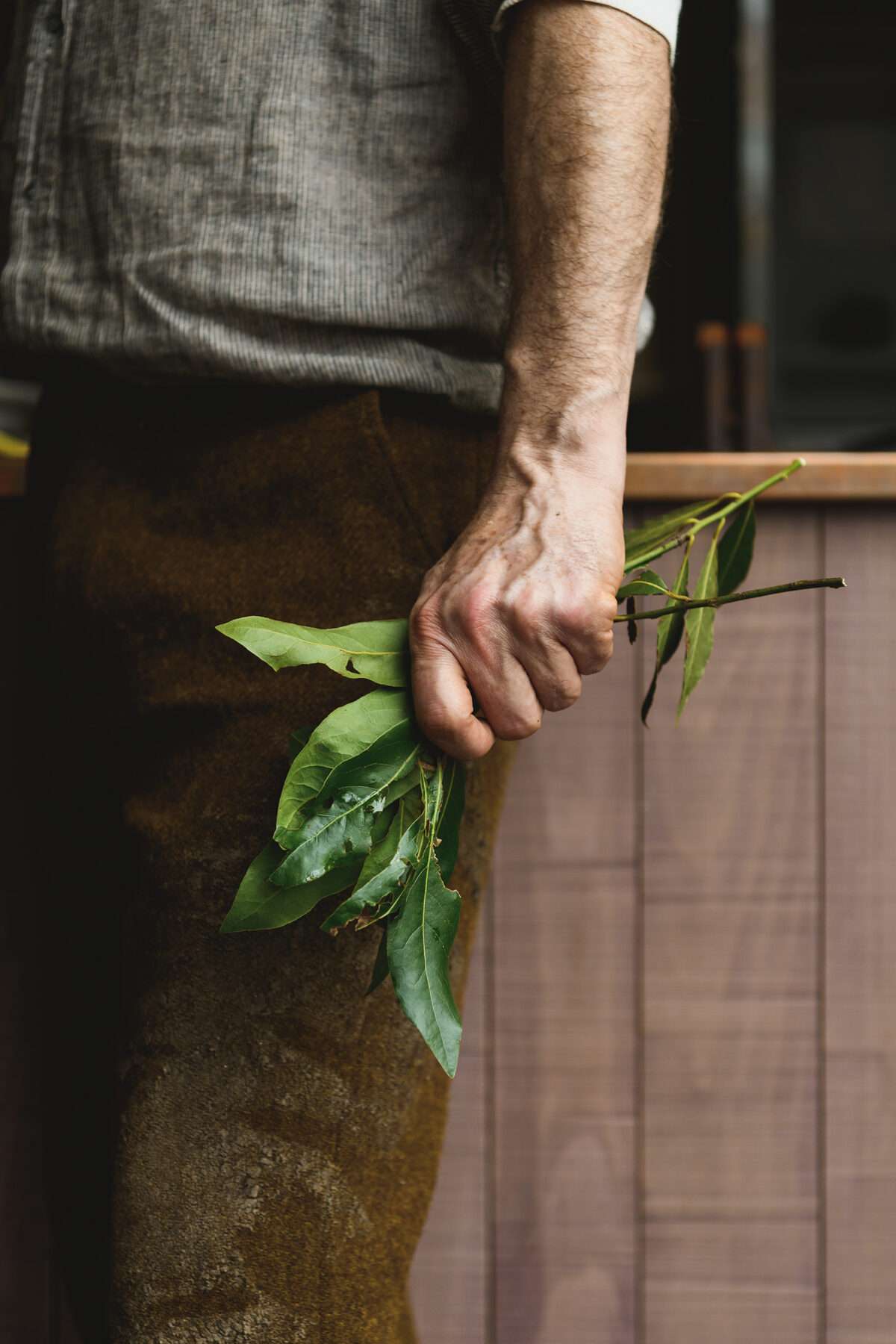
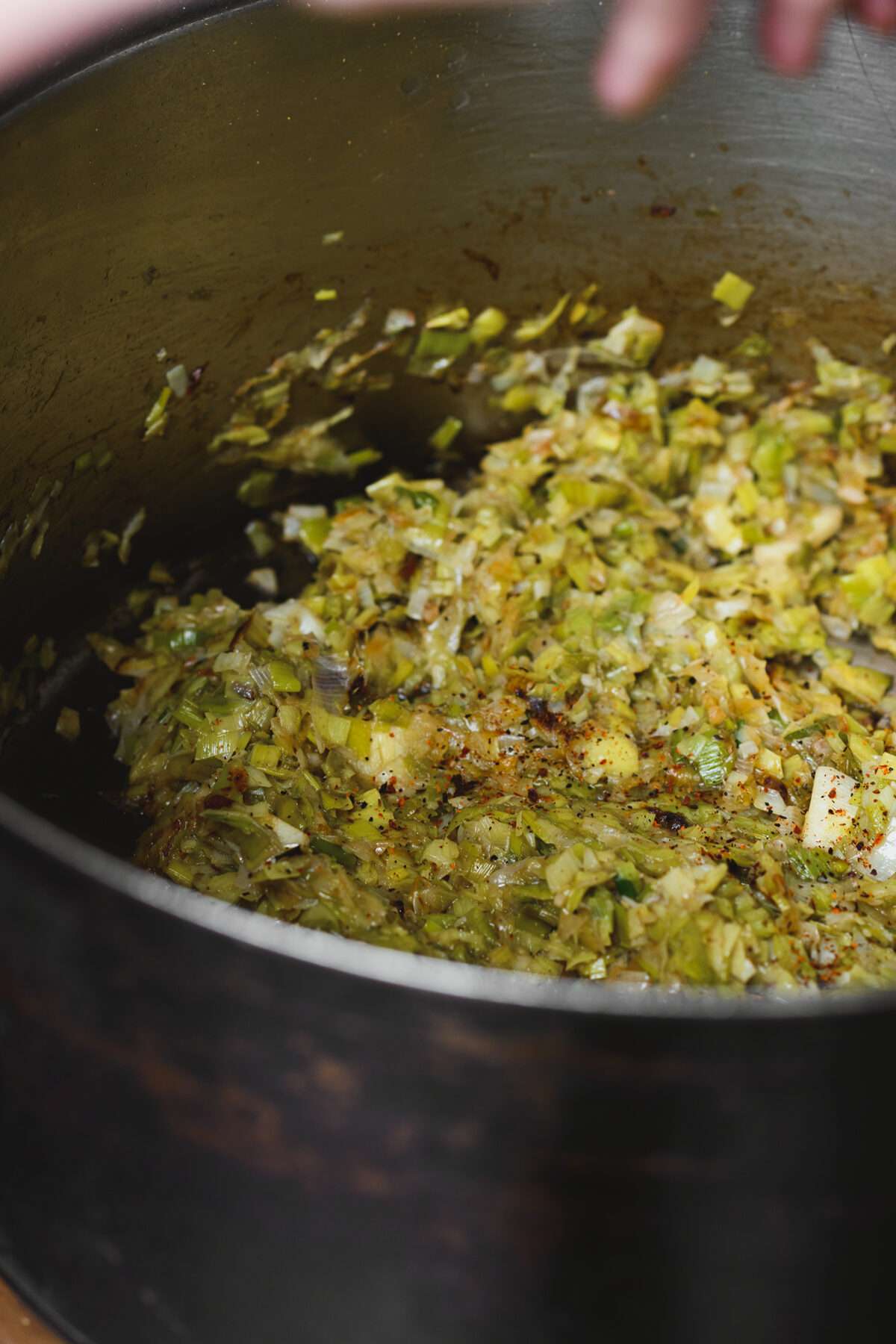
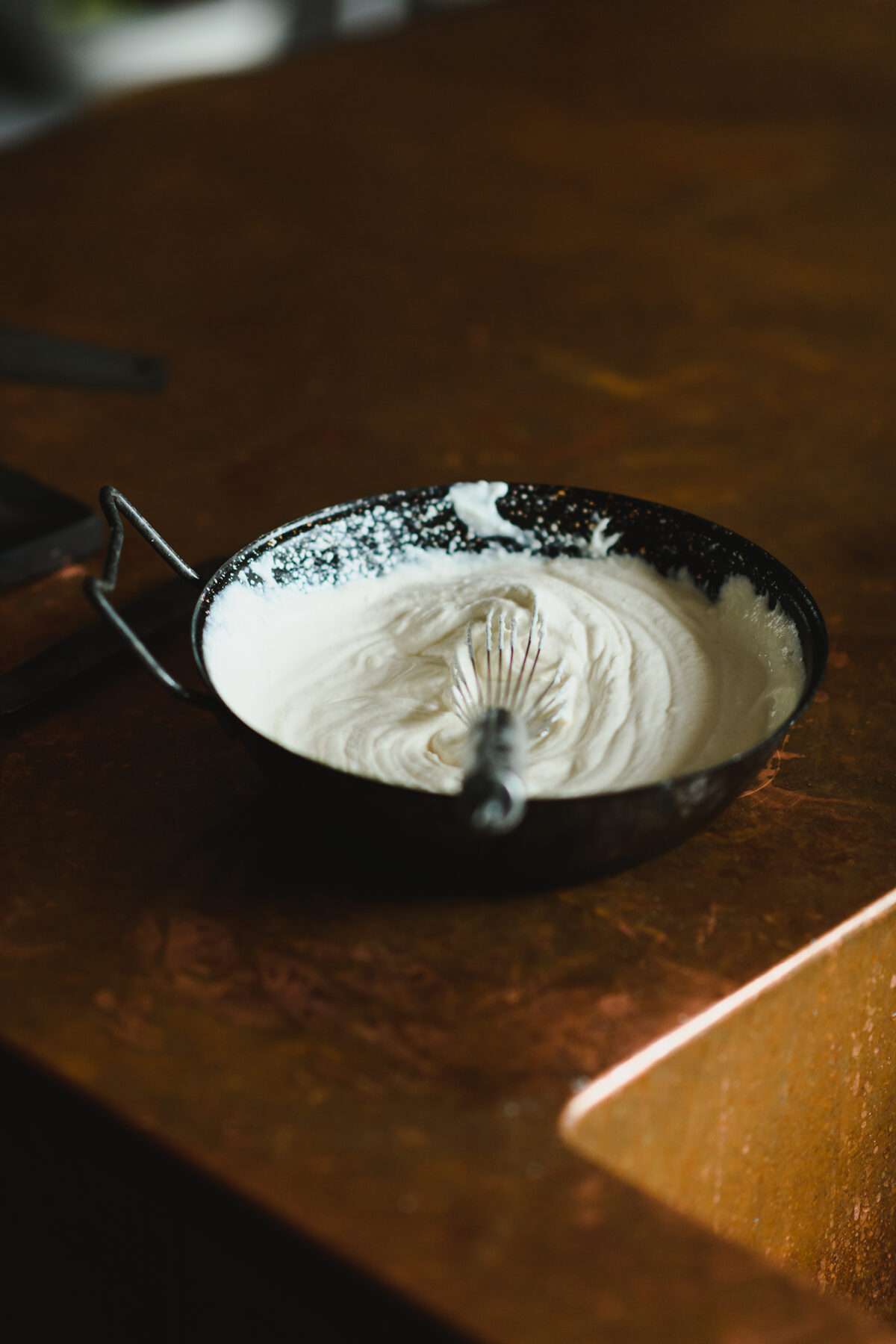
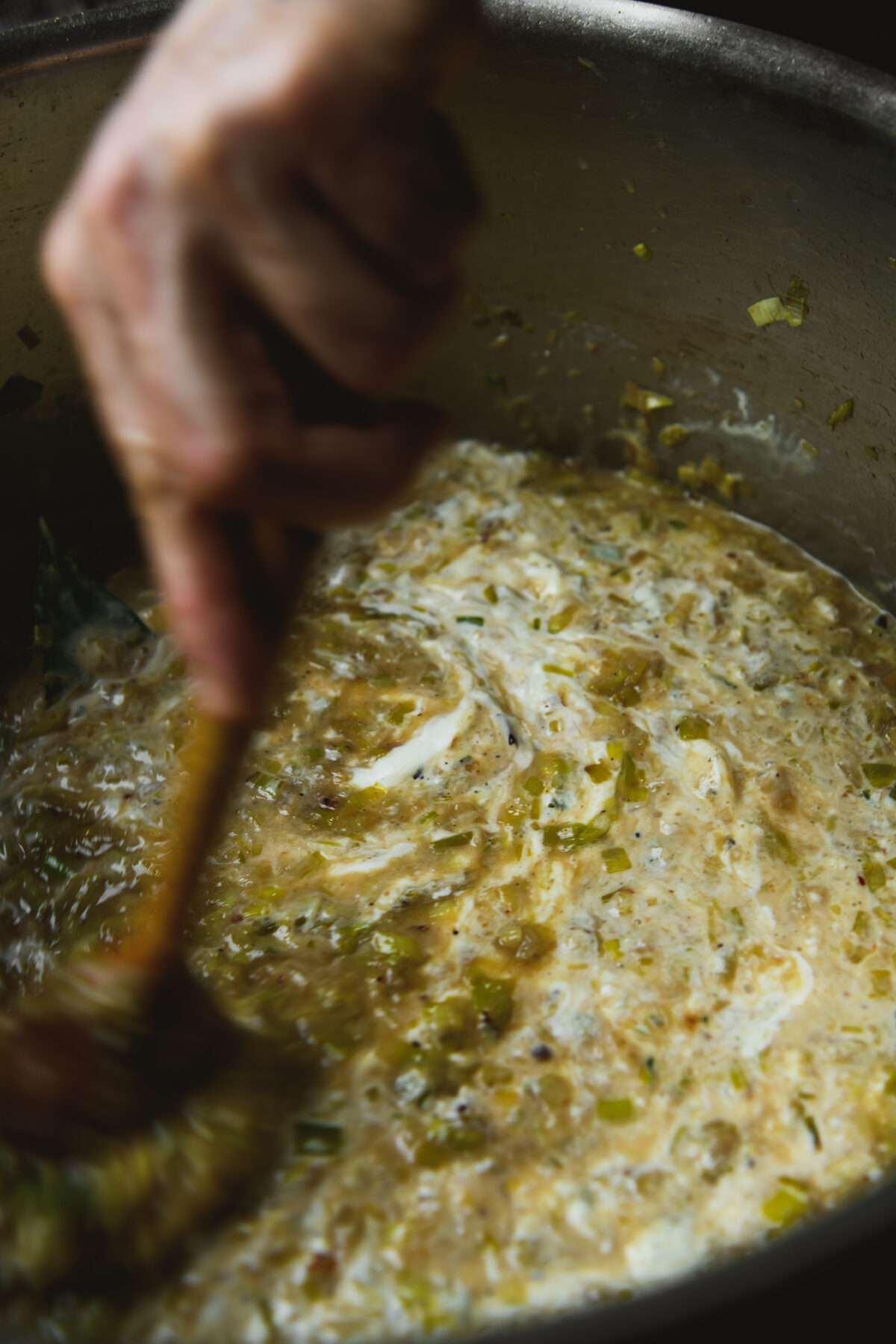
To prepare the soup
Place a large saucepan over a medium heat and add the butter and olive oil. When the butter begins to foam, stir in the leeks. After 10 minutes add the chilli flakes or paprika, dried (or fresh) mint and cumin, and continue to cook the leeks for another 15-20 minutes, stirring occasionally until they are soft and sweet. Set aside.
In a large bowl whisk the egg with flour until a smooth paste is formed. This will stabilise the yoghurt when it is heated. Now stir in the yoghurt and thin with the veg stock or water. Pour on to the leeks and return the saucepan to the heat. Gently heat the soup over a low to medium heat, stirring every now and then. Do not allow the soup to boil but remove from the heat just before it bubbles. The soup should have a smooth, silky quality about the consistency of single cream. Check for seasoning and pour the caramelised butter on top. Serve with bread. Enjoy!
From Moro the Cookbook – published by Ebury Press
